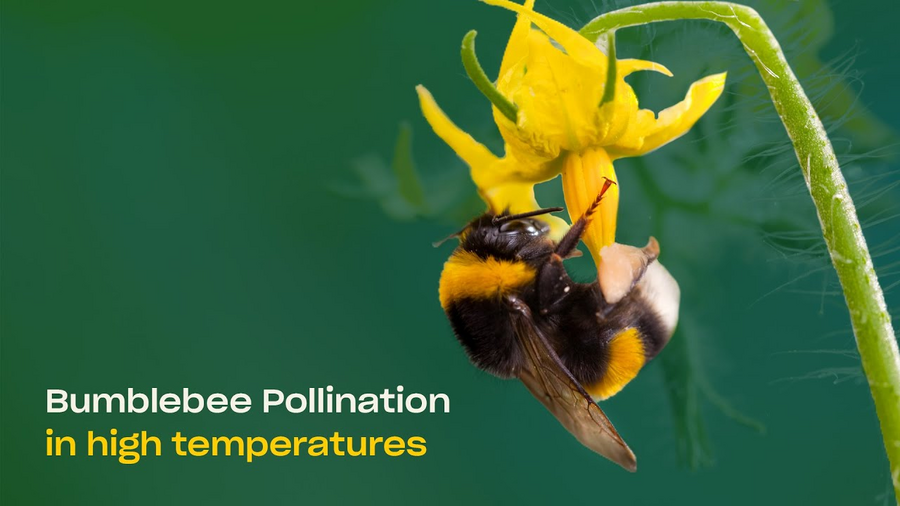The challenge of hot temperatures
We understand the vital role that bumblebees play in pollination, especially in hot temperature conditions. As temperatures rise, it is crucial to ensure effective pollination to support crop production and maintain high yields for growers. To ensure a positive result, it is crucial to protect to bumblebees from heat.
Hot temperatures can significantly impact pollinators' activity and efficiency, including bumblebees. High heat levels can affect bumblebees' foraging behavior, decrease their energy levels, and limit their ability to transfer pollen effectively. These challenges can lead to reduced pollination rates and lower crop yields.
Bumblebees try to maintain a temperature of 28°C inside the hive in any environmental conditions. Above 28°C the pollination capacity is reduced as their activity is focused on cooling the hive. Above 32°C pollination may stop due to damage to the hive. Bumblebees therefore need to keep cool in hot summer conditions to be able to function optimally and carry out their valuable pollination work.
Best practice for pollination in hot temperatures
The effects of the environmental temperature and sun radiation on the internal hive temperature can be great. We advise growers to protect the hive from direct sunlight and to place it in a cool spot. There are various methods available for growers to do so:
Right placement
Placing the hive near the ground on the shade of the crop can keep the temperatures inside the hive lower.
Shading
Providing effective shading to the top and the sides of the hive or providing an installation above the central walkway could benefit the bumblebees in high temperatures.
Other cooling methods include
Use of defused glass and coating, cooling by outside air and use of soil for cooling.
Using more bumblebees
By using extra bumblebees, you will ensure that you still achieve the desired pollination. By using Natupol Excel, which contains more bumblebees compared to our Natupol hive, you ensure the efficient amount needed for hot conditions.
Hives built for hot climate
The study of climatic and environmental conditions in which bumblebees need to operate in various countries worldwide conducted over a period of 35 years, has led to a number of innovations that have now been built into the design of the popular Natupol hives. Natupol Excel for instance have large ventilation holes and increased amount of sugar water to support bumblebees in regulating their climate in hot weather conditions.
Plant pollinator interaction in hot temperatures
Pollination success can be tricky in the heat. Get informed about the various factors that influence pollination, like bumblebee vitality, flower quality, humidity levels, and radiation. Flower quality may be also reduced caused by low humidity and high radiant heath. Even at 28° C, pollination can be reduced if the humidity is too low or radiation is too high. In conventional greenhouses, the recommended humidity range is 60-75%. Due to better air movement, the range in a semi-closed greenhouse is 70-85%.
